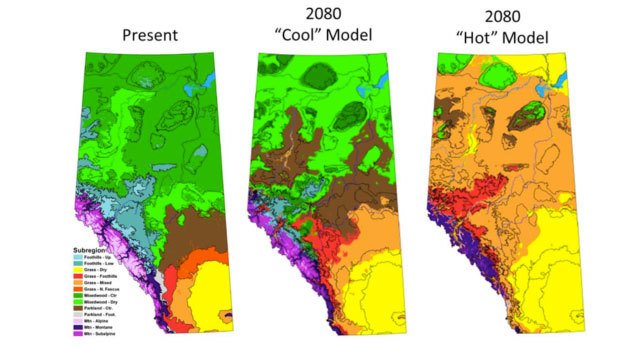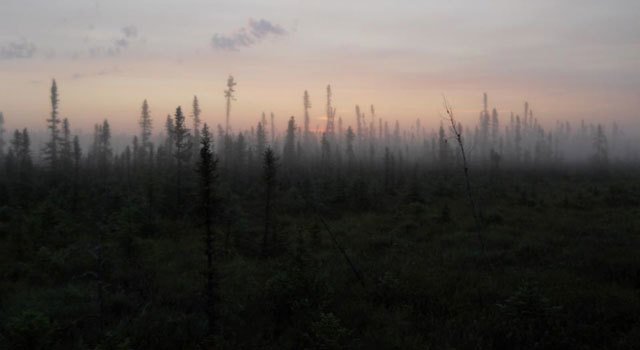The work is cutting edge and it has just been released by the Alberta Biodiversity Monitoring Institute (ABMI) in a report by ABMI scientist Dr. Richard Schneider.
“This report provides state-of-the-art projections of ecosystem changes in Alberta, at a level of detail previously unavailable,” says Schneider.
Using climate change models selected to represent the full range of potential climate outcomes in the province, Schneider offers climate projections as well as detailed analysis of how Alberta’s ecosystems are likely to respond over the next hundred years.
“All the predictive models project a temperature increase in Alberta of at least 2 °C by the year 2100, which would shift Alberta’s ecosystems northward. So, for example, the current parkland region around Edmonton would more resemble the grassland area around Calgary.”
“But when we look at the climate models under a high greenhouse gas emissions scenario, they more than triple the temperature increase to 6.5 °C. That outcome could result in the near complete loss of Alberta’s boreal forest. And to put that into perspective, today the boreal landscape covers over half of the province,” says Schneider.

The modelled distribution of Alberta’s Natural Subregions under current climate conditions, and under two different climate scenarios for the end of the century. The “Cool” Model predicts an increase of 2.5 °C in mean annual temperature in the province, while the “Hot” Model predicts an increase of 6.5 °C and significantly drier conditions.These maps are a sample of the range of mapped projections for climate and the distribution of Natural Subregions in Alberta contained in the report.
The main human activity emitting greenhouse gases into the atmosphere is the combustion of fossil fuels – coal, natural gas, and oil – which Albertans and the rest of the world use every day, mostly for energy and transportation.
“Northern Alberta has the potential to undergo dramatic ecological change once a climatic tipping point is reached. The question of whether the boreal forest remains intact or transitions to an open landscape comprised of aspen and grasslands will largely depend on the severity of future climate change in Alberta,” Schneider adds.
The report is called “Alberta’s Natural Subregions Under a Changing Climate: Past, Present, and Future,” and is intended to serve as a reference work; a companion to the Alberta Government’s 2006 study titled “Natural Regions and Subregions of Alberta.”
“If we can understand how ecosystems are likely to change over the coming decades then we can improve conservation planning and come up with effective climate change adaptations, as well. I hope this report and others like it can be of use to governments and policymakers with regard to decisions about climate change and Alberta’s future,” concludes Schneider.
“Alberta’s Natural Subregions Under a Changing Climate: Past, Present, and Future.” was produced as part of ABMI’s Biodiversity Management and Climate Change Adaptation (BMCCA) project. Led by ABMI, this project involves collaborators from the University of Alberta and the Miistakis Institute. The project receives its core funding from the Climate Change and Emissions Management (CCEMC) Corporation. Funding for Schneider’s report was also provided by the NSERC Alberta Chamber of Resources Chair in Integrated Landscape Management at the University of Alberta.
To view the complete report, visit the BMCCA website at www.biodiversityandclimate.abmi.ca

